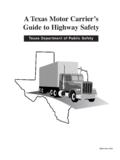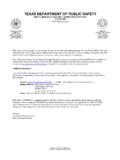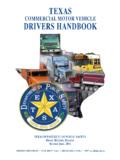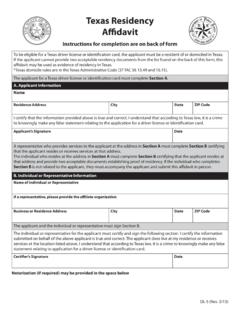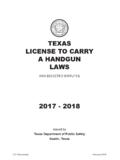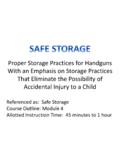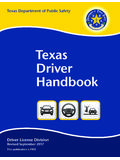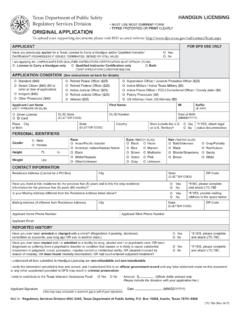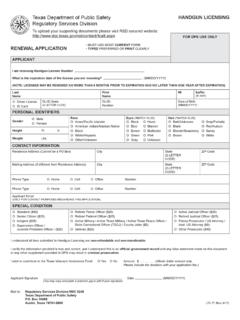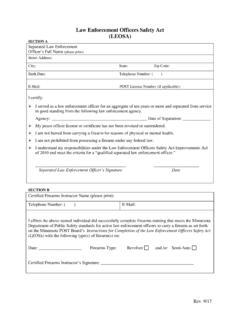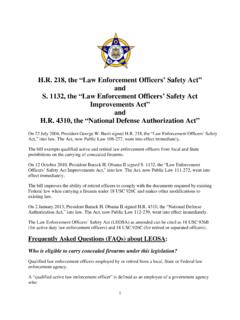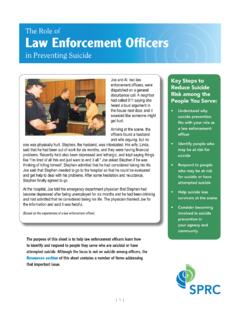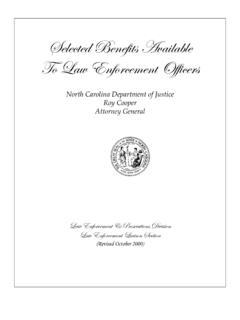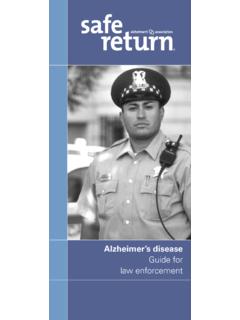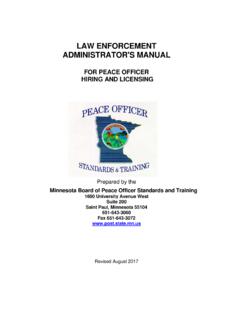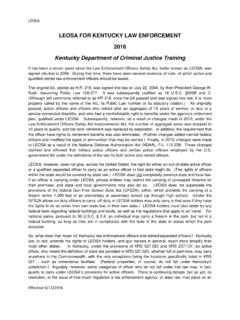Transcription of When Stopped by Law Enforcement - TxDPS
1 when Stopped by Law Enforcement If you are Stopped by law Enforcement it is suggested you: 1. Slow down and move the vehicle safely to the right of the road. 2. Park your vehicle as far to the right of the main traffic lane as possible. If available, park on the right shoulder or, if unavailable, park on a nearby well-lighted side street or parking lot away from high volume traffic. 3. Place the vehicle in a parking position, set the emergency brake, turn the engine off, and activate the hazard warning lights. 4. If at night, turn on the interior dome light. 5. Remain in the car, lower the driver s window if you feel safe to do so. Keep both hands clearly in sight on the steering wheel. Wait for the law Enforcement officer to give you instructions. An officer may approach from either side of the vehicle. 6. Before reaching into your glove box or under the seat to retrieve your proof of insurance or driver s license, inform the officer of where the items are located and follow the officer s directions.
2 7. If asked to exit the vehicle, check for passing vehicles to exit safely. 8. Advise passengers to remain in the car unless other instructions are given by the law Enforcement officer , and 9. At the conclusion of the traffic stop, give the appropriate signals and safely return to the proper lane of traffic when released by the law Enforcement officer . Obligations, Responsibilities, Courtesy and Safety State law requires a driver to immediately stop when approached by an authorized emergency vehicle and you may be arrested if you do not stop immediately. If you feel the area is unsafe to stop immediately or if you have concerns the vehicle is not a real police vehicle, you can take the following steps to minimize the risk of being arrested or charges being filed against you: turn on your hazard lights and drive slowly and carefully below the posted speed limit; you may call 9-1-1 and remain on the phone with the operator while you stop and verify the officer s identity; you may drive to a nearby well-lighted, populated place to stop.
3 It is important to understand that law Enforcement jurisdictions overlap and a local 9-1-1 call center operator may not be able to immediately determine what officer is working in that area at that time. If you stop in an unsafe location, such as on a bridge or a high traffic roadway, an officer may direct you over the public address speaker to move to a safer location. Follow the officer s directions. Law Enforcement officers, drivers, and passengers should respond with courtesy during traffic stops and other officer /citizen interactions. Drivers and passengers should not exit the vehicle unless asked to do so. Exiting your vehicle may be perceived as aggressive behavior and a threat to the officer s safety. Drivers and passengers inside a vehicle should not attempt to reach, dig, or search for their license or insurance documents before or while an officer is approaching.
4 Drivers who transport handguns in their vehicles are encouraged to keep them in a separate location from license and insurance documentation. During a traffic stop, the driver and any passengers are subjected to an investigative detention, which may only last for a reasonable amount of time. Passengers can ask the officer if they are free to leave and do so if the officer agrees. Law Enforcement may ask questions during this time. You cannot be punished for refusing to answer questions; however, drivers are required by law to display a driver license when requested by an officer . If you are lawfully detained or arrested, you are also required to give your name, residence address, and date of birth. A driver or a passenger who gives law Enforcement a false or fraudulent identity or false answers may be arrested. It may be to your benefit to speak to law Enforcement , such as to convey the reason you may have an emergency or for the driver to provide the officer your name address and date of birth if you do not have your driver license with you.
5 Law Enforcement may also ask for consent to search your vehicle or person. You may grant or deny the request to search; however, if an officer has probable cause to believe that your vehicle contains evidence of a crime, it can be searched without your consent. If an officer reasonably believes that you have a weapon, the officer can conduct a pat down search of your person and the immediate area around you, including areas of your vehicle. It is unlawful to physically resist a search, but you have the right to notify the officer that you do not consent to any search. Complaints or Concerns If you believe an officer has acted inappropriately during a traffic stop or other encounter, you should report that conduct to the officer s superiors and follow agency guidelines for submitting complaints against officers as soon as possible. Officers will normally provide their names and badge numbers on request, when practical.
6 Due to the overlapping of jurisdictions, drivers should make sure they identify the correct agency as well as any identifying aspects of the officer and law Enforcement vehicle. Drivers should refrain from arguing the validity of a charge during the traffic stop or detention. Signing a citation is not admitting guilt. It simply confirms your promise to pay the fine or contact the court. If you do not agree with the charge brought against you and wish to contest it, you should argue your case before a judge or request a jury trial and acquire the services of an attorney to represent you. False Identification Offense A person commits an offense if he/she gives a false or fictitious name to a law Enforcement officer who has lawfully arrested or detained the person. Evading arrest or detention A person commits an offense if he intentionally flees from a person he knows is a peace officer or federal special investigator attempting to lawfully arrest or detain him.
7 You will be subject to higher penalties if you use a vehicle or watercraft while evading arrest or cause injury to another person.
